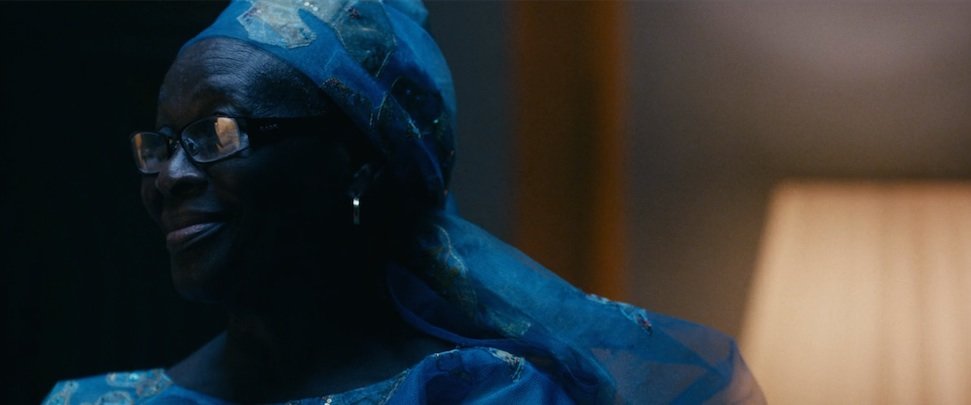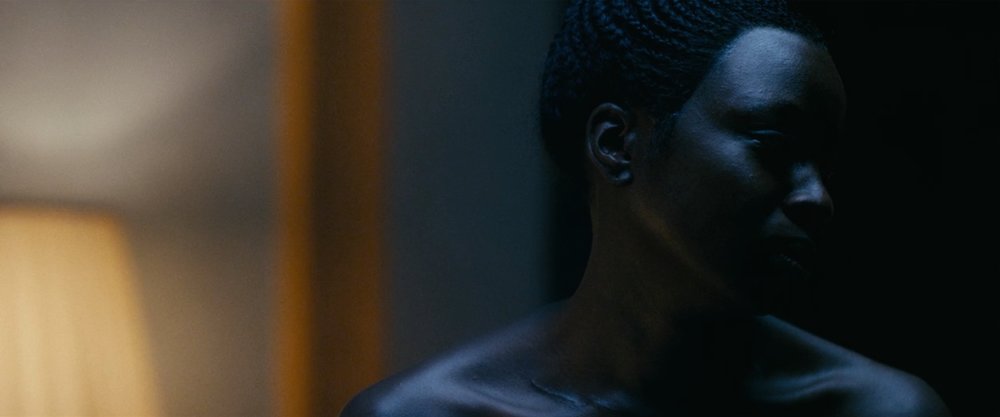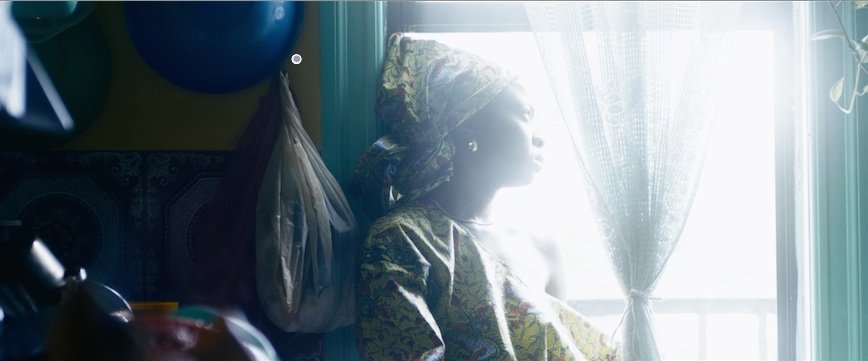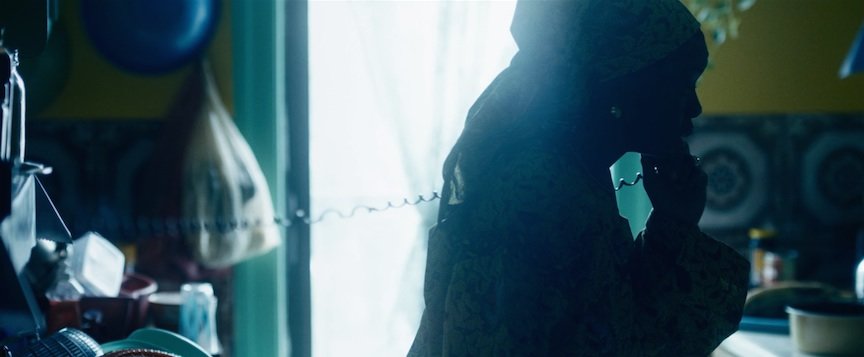
Albion Hockney
Basic Member-
Posts
723 -
Joined
-
Last visited
Everything posted by Albion Hockney
-
Will gelling a sodium vapor light change CRI
Albion Hockney replied to Albion Hockney's topic in Lighting for Film & Video
Ok makes sense! thanks much. -
For night exteriors i have usually gelled tungsten lights to get them in the ballpark of sodium or other low CRI city lights. I'm curious if light sources which are inherently give a very low color spectrum will be give a broader spectrum if gelled properly for example can I put a little Minus Green and CTB on a sodium light to make the strong color a little more subtle.
-
Augmenting a chandelier over a kitchen table
Albion Hockney replied to Marc-Andr's topic in Lighting for Film & Video
Wides with lights in frame are a problem for sure. I think you gotta know it is what it is.... there is no magic that can be done if there is no where to hide lights. I really get turned off but blown out lights in frame unless the style of it really plays to the story so I always try to do anything I can to bring the bulbs down to a reasonable level of exposure. I think a big part of it is what kinda chandelier it is....donno your scope but if you have a production designer to work with and the set is right for the bigger the chandelier (ie the more sources in it) the more light you can get with the bulbs not blowing out so much indvidually. I beleive in melancholia in the opening scenes you can see some examples of lighting with real chandeliers ....also in the film "mother of george" in the opening scenes .....but they are big kinda banquet hall style lights so there might be 20 15/25w bulbs in them or something. Roger Deakins always talks about spending time designing the practical sources in from the production designers and I think it is a really over looked step. One option might be compositing as if the shot is static.....shoot the scene with stronger bulbs in the chandelier and then stop down for a 2nd take and see if you can comp them together.....I once did that for a big shot of a football field with one stadium light in frame and it worked out well actually, but not sure how well it work in an interior space .....when I did the footaball field there was only black negative space around the light. -
For me the general rule is shoot 800 ISO if you want to have the most highlight latitude ( I find highlight clipping to be the RED's biggest weakness as the roll of isnt as nice as Alexa). That said if I'm shooting something without a lot of highlights and I want a cleaner image (especially in terms of noise in the shadows) I will shoot 320iso. For example a commerical with a night interior.
-
Can I use a full frame lens on a Canon T3i?
Albion Hockney replied to scott karos's topic in General Discussion
yea yea just trying to give a basic explanantion. -
Can I use a full frame lens on a Canon T3i?
Albion Hockney replied to scott karos's topic in General Discussion
Full frame is the defacto standard for focal length. on full frame 50mm is considered a "normal lens' meaning it is not wide angle or telephoto and provides a depth of field similar to the human eye in terms of the percived distance between objects in frame (for further understanding wideangle lenses expand depth of field making objects appear farther from eachother and telephoto lenses compress objects). on a t3i which has an APS-C sensor there will be a 1.5x "crop factor" meaning the 50mm lens will provide a depth of field and angle of view similar to a 75mm lens on a "full frame" sensor. because the lens has a wider image circle ment for a full frame sensor it will always "cover" the smaller aps-c sensor. But if you take a lens designed for an APS-C sized sensor and place it on a full frame camera you are likley to see heavy vingetting or literally see a black ring around the image because the lens won't project an image big enough to cover the entierty of the sensor. -
This film Mother of George is one of the more interesting films visually I have seen in a long time. Based in realism the film still carries a very heavily stylistic look that speaks very powerfully the films themes and intentions. That said I have been trying to figure out how Bradford Young did a couple of scenes and was curious peoples thoughts. There are two scenes in question. The first is a conversation on the edge of a bed. Through out the film there is a soft blue top light used....the light almost seems to be giving illumination more through reflective qualities of the talents skin then the light it self but either way its just gorgeous. Anyone have any idea what this source might be.....how big and soft it is? then there is also that little warm edge as if coming from the lamp....could this be tottaly practical? given the fact the lamp doesnt look over exposed at all I was thinking it would need to be another source, but I'm not sure ....it is 35mm after all lots of latitude. The 2nd scene the lead is in the kitchen and walks over to window and sits in the sill where she is super overexposed. I usually hate overexposure like this even when done stylistcally with purpose ....but here it does look really nice and the roll off looks very smooth. I assume there is some filtration on the camera and maybe some more work in the DI on it but Im curious what filter might be used on the camera here. You can see in the 2nd still before she goes to the window there is a lot of halation caused by the filter. best, Albion
-
I don't think you need a lot of color in your lighting to get that kinda look .....you can go more toward green in color grading if you want more of a look on it. But I'd leave the lights alone and just warm them up if you want...... maybe try using a little subtle yellow gel but nothing super strong and I'd run tests all yellow has green in it....thats what makes it yellow. CTS is CTO with a little green.
-
It's all very variable depending on what kinda work you are doing. If you can the best option is to pre-light ....if you can't do that and just need to throw something up quickly its pretty hit or miss and you will really need to focus on having people in places with good natural light.....If you only have 5min to throw up a LED panel I wouldn't rely on that as a key light, I would think about that more in terms of maybe adding a little fill or an edge. For example the bourdain scenes are usually pre-light from what I have see....some pretty extensivly. (Zamboni has won a few emmys on that show and I think he really likes to nail in the lighting ...very rarley does he do a meal full natural light if its at night. The thing that has worked best in the past is China balls with some duvatene and other little non movie lights that you can rig out of frame without needing a lot of grip equipment on the ground (I basically try to avoid using stands and any lighting control like solids or 4x4 frames).....I'd say with a host of household bulbs, some china balls, dimmers, and various rigging options (Maffer, scissor clamps, etc) that'll be your best bet. Of course if you do have the ability to throw up one real light as well that might help and for day interior having a joker 1600 might be a big help even if you just bounce it off a ceiling to even out sunlight coming in.
-
A Most Violent Year by J.C Chandor
Albion Hockney replied to Miguel Angel's topic in On Screen / Reviews & Observations
Thanks for sharing. "A Most Violent Year" does indeed look to be photographed super well (trailer was gorgeous). Bradford Young is with out a doubt one of the most interesting cinematographers on the rise. If you have a chance I recomend seeing Mother of George its seriously breathtaking work...amazing use of over/under exposure techniques. In alot of ways Young reminds me of Willis. He often does so little using practicals and naturalistic tecniques, but the result is never simply the in vogue "natural look" or plain realism ....he instead creates these very stylized worlds and because he crafts it so well it still feels very "real" and authentic. -
I was more so curious if people were aware of car brands that have less green in the glass. The thing I did recently the car windows were super green. It was a hyundai mid size suv
-
...always just do that part in my head....just subtract 2 stops from w/e it gives you.
-
Anyone have any knowledege on what cars (makes/models) don't tint the windows so green or is it just across the board? anyone have a gel combo to ease it or something they do? .....I shot something recently unaware of it and we are just going to time it out but it's pretty bad!
-
You should really run your setup through the photometric calculator. and factor in the diffusion you want to use full grid cuts about 2 stops of light. The thing with frame is you need to back the light up to a distance that it can fill the whole frame evenly if you want to get the softest effect possible.... and you probably don't have enough light to back up a 5k to fill a 12x through full grid and still get the stop your looking for.....best test it out on the calc. I would consider going through a 4x4 of 250 and then going through the 8x frame with light grid .....its probably about the same stop loss but the 250 will spread the light more evenly over the frame and you can prob have the 5k a bit closer.
-
from my experience with a white limbo BG you don't really want much of an edge or light from behind on them unless you are underexposing the white bg and doing it as grey ....having them go dark on the back side helps with seperation if anything. if you are doing head to toe I would go with a 12x and a 10k if you can do it for sure it will look nicer....even if you don't book light
-
Lighting walking scene in a city
Albion Hockney replied to Gabe Phillips's topic in Lighting for Film & Video
My Gaffer used to always take a china hat work light (can get at any hardware store) and diff it up really heavy with a way dimmed down 250w bulb for some walk and talk kinda stuff to work as a fill under sodium vapor looking lights as the color temp matched the warmth of the sodiums pretty well. For most of the stuff we were using our own lights with a Gel combo that was less green then sodium vapor but it wasnt that far off and yea it did the trick. If the source is just for a very minimal fill so they dont go completey into darkness I dont think it needs to be super soft as you will barley notice it......but if you want it to play more and really fill them in that is a different story ....I would think like david said it will be easy for anything that really fills them in to just make the face pretty flat. -
Oh also noticed your studio has a cyc wall next to your talent too.....are you shooting toward that wall at all too or is it all straight on. with that white wall there you might not even need a fill light depending on how close your talent is to it .....or you might want to make sure they have a black out curtain for it if you want to control the fill light and make sure there is not too much spill.
-
whats your frame like (CUs or wider)? Im not sure about the lighting of the backround ....seems to me studios usualy of cyc lights which are usually just floods pointed at the backdrop to give an even exposure....atleast thats been my experience the one time i did something like that. if you use the space lights youll probably want to have flags on the backside to cut that light off your talent. for the talent I think your fine this is pretty basic stuff. with a 5k you through diff you should have enough light for 4 at iso 400 I think.....you should check out the arri photometric calculator and you can put in your distance of the light to talent and it will tell you the stop your at....youll just need to calculate for light loss from the diffusion you are adding. if its possible I would use a 10K and I would book light the talent from a bit more sidy of angle and maybe use a 12x instead of an 8x but that might be a budget thing for you? If you do a book light you can get away with prob 1/4 grid....at the very least Id put a 4x4 frame of light diffusion before the 8x frame also in that case you can prob get away with half grid. Double diffusion or booklighting always seems to give a more pleasing light to me then going through on layer of heavy diff depending on how wide your shots are your fill might need to be larger as well and that will also probably want to come at a more sidey angle to fill the side of their face not getting hit by your 5k. don't know much about the BMPC and IR though.
-
My first thought would be if its supposed to be an intimate scene and its a somewhat natural feel then there prob wont be tons of color....if for example its college kids throwing a party and they have that one LED DJ disco light that will probably just motivate some edges and maybe some color in the backround ....but youll want to limit it a bit so it still feels like a real college party and not a club. So when the director says he wants a lot of color I would talk to him in specifc (and maybe you have already) about how much color and how poppy the image is supposed to be because if its super color full and flashing light everywhere it will indeed start to look like a club especially in close ups and it will become pretty stylized which maybe is ok for what your are doing? That said I think your idea of them having one disco light or party light in the backround is good ...depending on how bright it is and how much movment it has you can probably use that to light the background and provide edges on your talent....I think youll want to do some tests and look into the differnt lights avalible they are all differnt and put out all kinds of light.....How wide is your widest shot....providing some pictures and an idea of your shots would for sure help. .....in situations like this (low key interiors that is) smaller practical sources usually go farther then movie lights. Chinaballs are great to have... the trick with those is to hang duvetyene around them to shape the light so it doesnt bounce around everywhere. another nice tool is strings of bulb sockets (usually reffered to as zip cable? someone?) might be nice to string lights around the backround to get some ambiant exposure and help you out in your wide shots you can put small bulbs in there (25w or so and also put it on a dimmer to dial in the exposure) You can also combine the party light you get with just washing deeper backrounds in strong monochromatic color (think about your depth in from and for example if you see outlines of doorways or other rooms in your shots) .... (use your 1k arris softs or fresnels for that) and scrim it down underexposing it a whole bunch (3-4stops). I have never done a party scene with a lot of light gags ....ie moving flashing strobing lights... so if you want that I'm not sure the best approach but I would assume a flicker box (rather then a dimmer) would help and you might need people on the heads panning tilting them around in shot.
-
Roger Deakins new shoot.
Albion Hockney replied to John Holland's topic in In Production / Behind the Scenes
true ...that was a a much slicker film though then I would assume anything the coens would do. -
Roger Deakins new shoot.
Albion Hockney replied to John Holland's topic in In Production / Behind the Scenes
Just wanted to note that Deakins has said that the choice of film is because its a period film and the coens thought it would be best and he of course agreed -
Yea I just read the brody review....its really harsh, but I think he makes really good points. This kinda summed up some of my thoughts "The subject of the film and Pawlikowski’s aesthetic converge in peculiar ways. Pawlikowski’s shots strain after a sense of originality with off-center framings and herald their own gravity with their stillness. The director advertises the seriousness of his approach by filming in black-and-white. But the aesthetic also embodies a historical idea: not only is “Ida” a film that could have been made in 1962, but, more important, it’s one that should have been made in 1962" Considering Pawlikowski framed all the shots I think the DP did a tremedous job with the lighting, no faults there
-
My point was simply that it being shot on the Alexa is irrelevant....and it did indeed seem you were seperating the "quality" of the images from the storytelling as if they were seperate things to talk about, which I beleive they are not....and I think you do to?
-
I think my previous post in being 3 or 4 sentances is a little overly harsh and generalized, I think the film has some really great moments and some shots did feel like they had good purpose. That said I think the cinematography still does call too much attention to it self. I see how in comparision to a action film you could say it is subtle....and of course it a subtle, slow, "art" film. That said the framing is very strong. I think the idea that it is "god watching over" or plays to the smallness is nice. but it's a little strongly directly symbolic and forced in my opinion... and there are shots where there is additional room not just on top of the frame but to the side as well. I think its also worth noting that Pawlikowski has said in interview he did the framing and the dp lit it, I think the framing of the movie was always a huge part of what Pawlikowski wanted to do and in my opinion that approach in itself is a bit flawed because again it shouldnt be the framing of the image that says something it should be all of the elements together in unison .....in this case I think the camera work was just a bit more powerful then the other elements and weighed too heavy.....going back to my last post again I think the fact the end shot was handheld really shows that pretension, its as if he thought that moment wouldn't work if it wasn't handheld and the whole movie relied on this handheld moment ....maybe in a short film, but after an hour I didn't need that, it felt forced to me. I mean ....I gave the film a 4 on netflix, I enjoyed it in a lot of ways, I just think Pawlikowski needs to not rely so much on the the framing of the camera.
-
Bill I really dislike the phrase " I have seen better shot stuff with the Alexa" its just a very quick shallow statment the one assumes the camera has much to do with how "good" a film looks and 2ndly it makes it seem like your interest is some visual "quality" I dont think you can measure how good films look like in that way....its based in how well the images tell the story and how meaningful they are. That Said I felt Ida was pretty pretentious in its use of the camera. The 4:3 b/w seemed a bit like a gimick and of course a film that looks that way is going to be called upon as an example of great cinematography it seems akin to an actor cast in a film playing someone with a mental illness getting an oscar nomination. I felt the framing choices didn't serve the story as much as they were just pretty for prettys sake with no real intent. I think this shows through as well in the choice to make the last shot handheld ....its an obvious choice and its trying to hard to tell the audience something with the camera work.....I thought the film was acted well and the story in itself was interesting, but the camera work was over blown and weighed way to heavy on the story.






